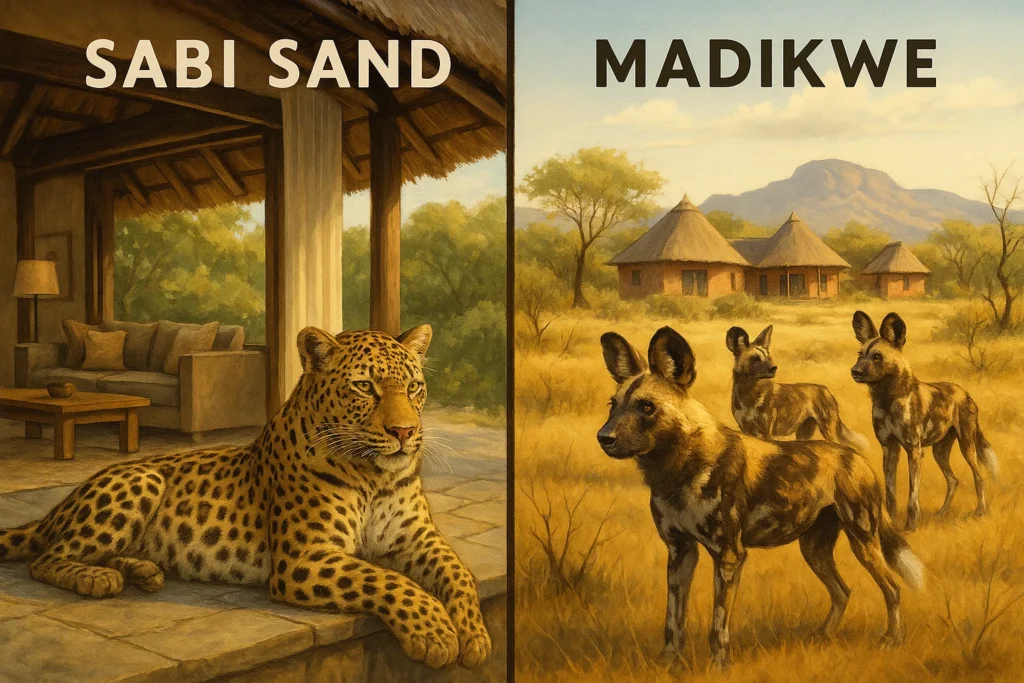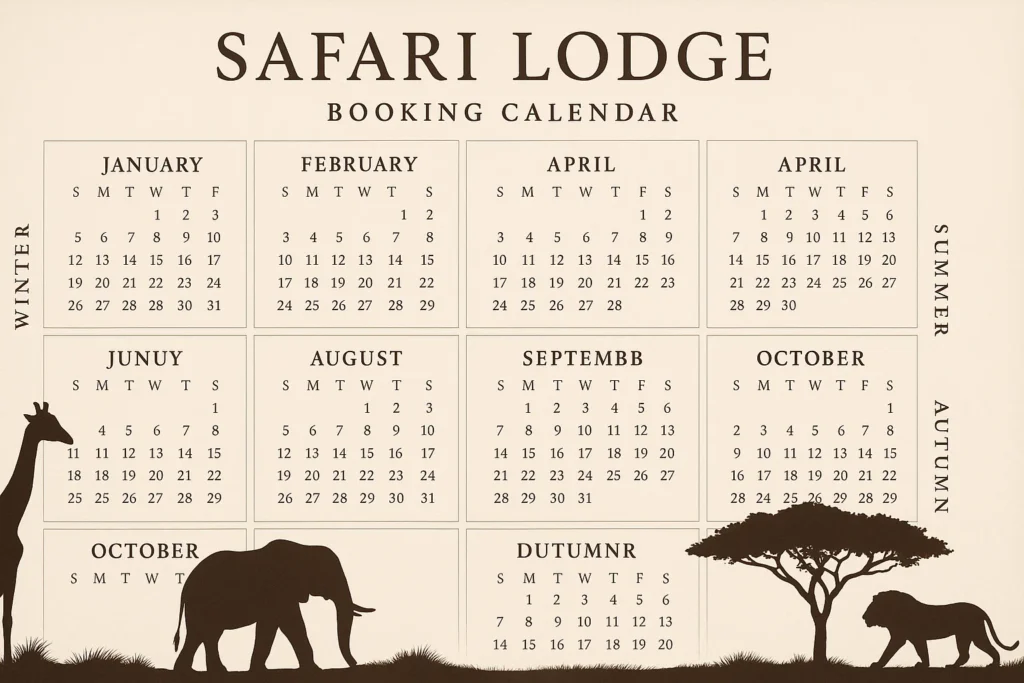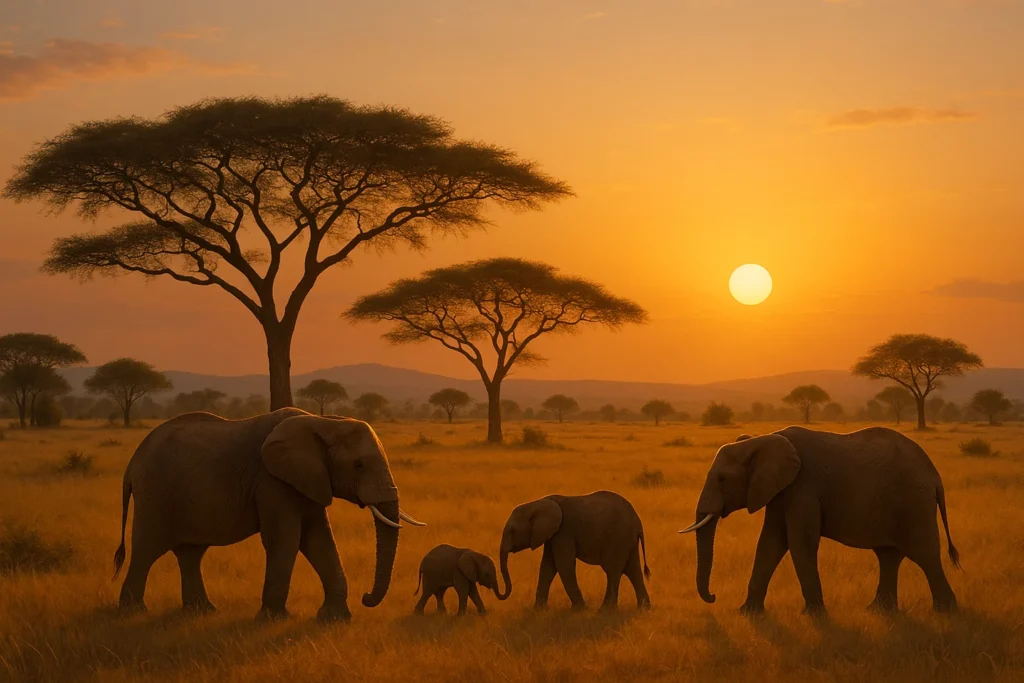Planning a safari in South Africa comes with incredible options, and two of the most celebrated private game reserves are Sabi Sand and Madikwe. While both promise exclusive wildlife experiences and luxury accommodations, they differ in wildlife density, accessibility, atmosphere, and even malaria risk. Here’s a comprehensive comparison to help you decide which suits your safari goals best.
Location & Accessibility
Sabi Sand is located in Mpumalanga, adjacent to Kruger National Park, and forms part of the Greater Kruger ecosystem. It’s best accessed via flights to Skukuza (SZK) or Kruger Mpumalanga International Airport (MQP), followed by road or air transfers into the reserve. The logistics are smooth but can involve multiple steps from major cities like Johannesburg.
Madikwe, by contrast, is located in the North West Province near the Botswana border. It’s a malaria-free reserve, and many lodges are reachable via a 4.5–5.5 hour road transfer directly from Johannesburg. Charter flights are also available to Madikwe’s private airstrips. This accessibility—particularly for families—makes Madikwe a popular choice.
Wildlife Experience
Sabi Sand is renowned for high wildlife density, especially leopards. It’s part of the unfenced Greater Kruger, meaning animals roam freely across a massive ecosystem. Off-road driving is permitted, which enhances sightings and photographic opportunities. The Big Five are all present and reliably seen.
Madikwe also boasts the Big Five, along with species not found in Sabi Sand, such as the endangered African wild dog and brown hyena. It may not match Sabi Sand’s leopard frequency, but it excels in diversity. The reserve’s varied terrain—bushveld, savannah, and rocky ridges—makes game drives visually engaging.
Safari Style & Accommodation
Both reserves offer luxury lodges with full-board safari packages, but there are stylistic differences:
- Sabi Sand leans into high-end, boutique-style lodges with impeccable service, some of South Africa’s most exclusive safari properties.
- Madikwe is family-friendly, with several lodges catering specifically to kids, and a range of mid-luxury to ultra-luxury options.
Game drives in both reserves are guided, and both allow off-road tracking and night drives, creating intimate wildlife encounters.
Atmosphere & Guest Volume
Sabi Sand is quieter in terms of guest numbers per lodge and typically offers more privacy. The reserve’s strict vehicle limits at sightings (2–3 at a time) help maintain a calm and focused experience.
Madikwe tends to be more socially vibrant, appealing to families, groups, and first-time safari-goers. While sightings can be just as spectacular, the atmosphere may be more dynamic.
Conservation & Community Impact
Both reserves are success stories in conservation and community collaboration:
- Sabi Sand benefits from decades of ecotourism and is a leader in leopard conservation.
- Madikwe was once degraded farmland and is now a thriving wildlife sanctuary, notable for its rewilding success and community-owned lodges.
Health Considerations
One of Madikwe’s biggest advantages is that it’s malaria-free year-round—ideal for travelers with young children or health concerns.
Sabi Sand, like the rest of Greater Kruger, is in a low-risk malaria zone. Prophylaxis is generally recommended, especially in the wet season (Nov–April).
Summary Table
| Feature | Sabi Sand | Madikwe |
|---|---|---|
| Location | Greater Kruger, Mpumalanga | North West Province |
| Access | Flights + transfers | Road (5 hrs) or charter flights |
| Malaria Risk | Low risk, prophylaxis advised | Malaria-free |
| Wildlife Highlights | Big Five, leopards, dense sightings | Big Five, wild dogs, brown hyena |
| Safari Style | Boutique, luxurious, exclusive | Family-friendly, mid-to-high-end |
| Conservation Model | Private land, ecotourism legacy | Rewilded farmland, community-run |
Conclusion
Both Sabi Sand and Madikwe offer unforgettable safaris, but the best choice depends on your preferences:
- Choose Sabi Sand for intense Big Five action, especially leopards, and a polished, intimate experience.
- Opt for Madikwe if you’re traveling with kids, want a malaria-free environment, or are keen to see wild dogs.
Whichever you pick, South Africa’s private reserves deliver world-class wildlife in stunning settings. For more comparisons and itinerary advice, browse our blog.
FAQs
Generally, yes. Sabi Sand lodges tend to be higher-end and priced accordingly.
Sabi Sand, thanks to leopard density and off-road access tailored for optimal angles.
They’re more reliably found in Madikwe, though occasionally spotted in Sabi Sand.
Madikwe is fenced; Sabi Sand is unfenced and part of Greater Kruger.
Madikwe is more accommodating to children, with specific family-friendly lodges.
Yes, guided night drives are available in both reserves.






